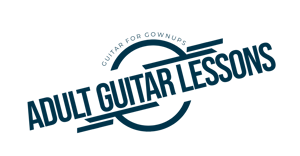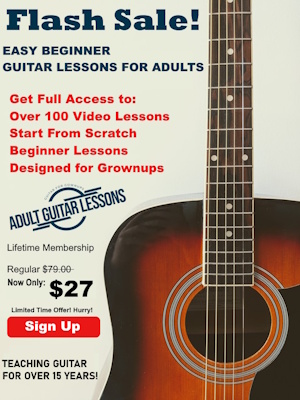A considerable portion of my day is spent returning student emails with questions or concerns regarding learning to play guitar.
One common inquiry that I encounter in my inbox is from new guitar players that are concerned that their hands are too small to play guitar and their fingers are too stubby.
They typically state that they are having a hard time forming chords and making them sound clear. Some say that they are actually experiencing pain or discomfort in their hands when trying to play guitar…
Whenever I get one of these messages I try to discern a couple of things from the writer.
1. How long have they been playing guitar?
2. What kind of guitar are they playing?
The answer to the first question often reveals a lot. If the respondent informs me that they have just recently started playing guitar, then small hands and stubby fingers may not be the actual culprit.
The fact of the matter is that everyone, regardless of hand size, experiences difficulty and discomfort in the early days of playing guitar. There is no way around it.
When you take hands and fingers that have never played guitar before, and suddenly tell them to press down hard on metal strings and contort themselves into never before imagined twistings and shapes, it’s reasonable to expect a certain lack of cooperation early on.
And when the hands start to grumble and complain in the beginning, it is quite natural for the new guitar student to look for a cause, a source of the problem – and place blame on small hands.
When a student writes to express concerns about having small hands and stubby fingers, and, tells me that they have just started playing – I usually try to discuss with them the importance of giving themselves the time and patience to work on the basics of playing guitar. The stuff we all have to learn. Things like:
1. Working on getting the proper curl to the fingers so that only the finger tips touch the strings on the desired notes.
2. Gaining added finger pressure by placing the thumb on the back of the neck, instead of curling it over the top of the neck.
3. Concentrating on finger placement so that the sides of the fingers do not inadvertently mute the adjacent strings.
A new student should always keep in mind that the challenges they are having in the beginning should not necessarily be blamed right away on small hands or stubby fingers.
It takes time and practice to master the guitar, and part of that process is to train the hands and fingers to do new things that they have never done before.
Over time, the hands will stretch and the finger tips will develop calluses, and the things that seemed impossible in the beginning, will eventually become natural and effortless.
The answer to the second question often relates to the first. If the student has been playing for a while, is well beyond the basic open chords and the accompanying learning curve, then the small hands problem might just be an issue of guitar size.
Obviously there are many numerous guitar shapes and styles on the market. From jumbo acoustics, to standard dreadnoughts, to Strat or Les Paul type electrics, to classical shapes, to parlor guitars, and ¾ and ½ size guitars for children, and many more.
Within each category of guitar shape, you can typically find guitar models manufactured with various neck sizes, and this is the key for the player who feels like they have overly small hands.
Subsequently, there is usually a guitar out there that is a good fit for virtually any hand and finger size, as well as any body shape.
In my years of teaching I have had students as young as 6 or 7 years old, and there are guitars on the market that are sized to accommodate the small hands of players in this age range, so it’s reasonable to expect an adult guitar student to be able to locate a guitar with a neck that is sized right for them, large hands or small.
We, as humans, are all built differently – we come in all shapes and sizes. If that’s the case, then it stands to reason that guitar players come in all shapes and sizes as well.
In my years of playing guitar I have encountered many accomplished guitar players with small hands and stubby fingers. They simply learned how to make the most of what they were given and did not consider it to be an impediment to achieving great things on the guitar.
So if you are in the early stages of learning guitar and are questioning your ability to make progress on it because of small hands and stubby fingers – keep in mind that the frustration you are experiencing may have more to do with the amount of time your hands have spent on the guitar – rather than the size of them.



